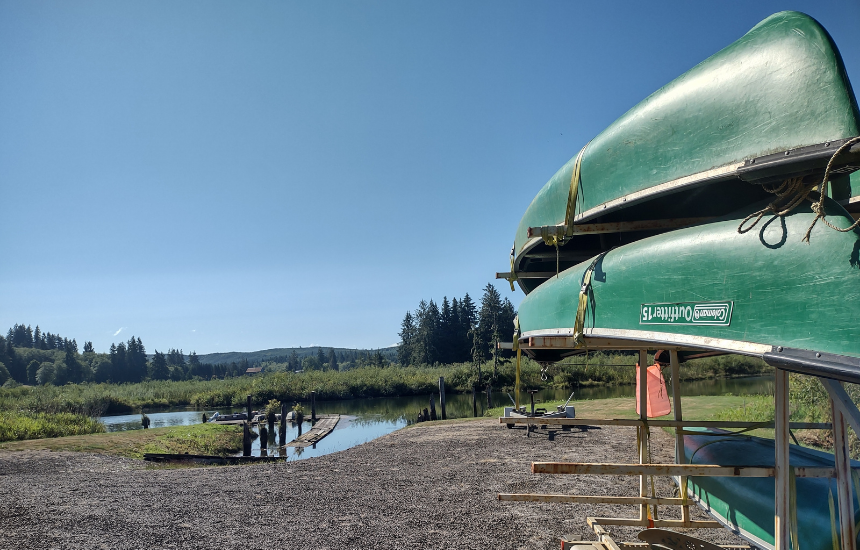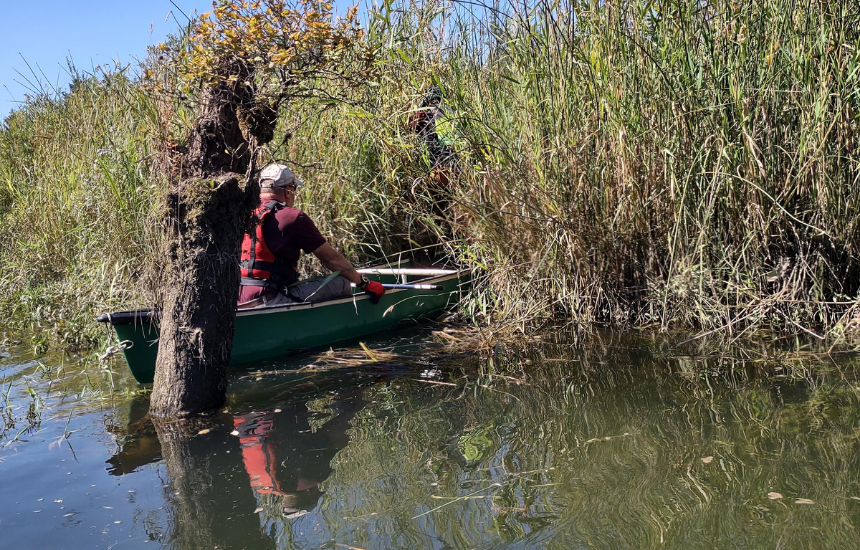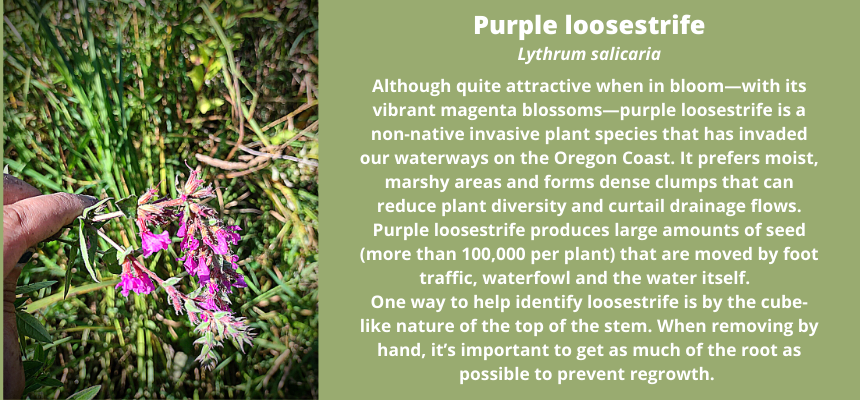
The John Day River, accessible by canoe or kayak, is a tributary of the Columbia River.
When it comes to stewardship projects, few take advantage of late-summer’s sweet stillness and warmth quite like a tranquil canoe ride on the John Day River to pull purple loosestrife from the marshy wetlands conserved by North Coast Land Conservancy.
That’s not to say the task—the focus of a Weed Warrior Wednesday in early September—is a simple one. During the stewardship day, staff and volunteers traveled the river in canoes, finding small inlets where they could get onto the property by foot and then wading through thick, tall brush to find the purple loosestrife.
Some of the smaller weeds can be easily pulled up by hand. The thicker, more mature ones often require small tools to get the deep tangle of roots. But while the work can be grueling, there’s also a sense of satisfaction that comes from watching the canoes get piled up with a non-native plant that doesn’t belong on this land along Oregon’s northern coast.

Volunteers were in the thick of it for Weed Warrior Wednesday on Sept. 1, as they set about removing purple loosestrife from the marshy wetlands.
Loosestrife is an invasive plant that threatens riparian systems such as the scrub-shrub habitat at John Day River Marsh, a roughly 25-acre property that NCLC acquired in 2003.
The wetland, dominated by Sitka spruce and a large population of willow with a sedge understory, is braided with tidal channels and hydrologically connected to the Columbia River estuary and our nearby Wolf Bay Habitat Reserve, which is also on the Columbia. The spruce trees do well in these types of systems, acting as a carbon sink for carbon dioxide uptake.
“In the Columbia River, purple loosestrife is pretty rife,” Land Steward Eric Owen says. “But up some these tributaries, it’s not nearly as widespread, so it’s really important and impactful that we’re able to get rid of it in these areas.”
According to Stewardship Director Melissa Reich, NCLC also removes loosestrife to help promote some native pollinator species, such as Douglas spirea, Douglas aster and wapato. So far, staff has planted all three at John Day River Marsh.
“When we remove, it is important to make sure that it will be replaced by a native pollinator species, either naturally or by augmenting with planting,” Reich adds.
You can explore this property via canoe or kayak. To get there, put in at John Day County Park and paddle upstream on a rising tide; return on the ebb.

Comments